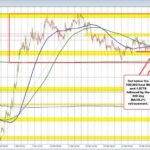
Navigating Currency Chaos: Impact of Tariff Uncertainty on Major Currency Pairs
Tháng 4 2, 2025
Navigating U.S. Tariffs: Impacts on Financial Markets and Economic Outlook
Tháng 4 2, 2025Alec Baldwin’s Controversial Statement on America’s Political Climate: A “Pre-Civil War Environment”?
Recently, actor Alec Baldwin made headlines by asserting that the United States is currently in a “pre-civil war environment.” His remarks, which draw striking parallels between contemporary societal divisions and those observed leading up to the American Civil War, have ignited a plethora of responses ranging from curiosity to criticism. With Baldwin’s statement, the narrative of heightened political polarization has come under the spotlight, fueling discussions around the implications of such a charged comparison.
A Landscape of Political Polarization
The context of Baldwin’s comments emerges in a landscape marked by increasing political tensions and a noticeable divide within the Democratic Party. The party currently grapples with internal conflicts between moderates who advocate for a centrist approach and progressives pushing for more radical changes. This fracture, some analysts warn, could portray itself as a “civil war” within the party itself, exacerbating issues of unity and coherence as the country heads into critical upcoming elections.
Critics of Baldwin’s remarks have dismissed them as “fear porn,” suggesting that such extreme comparisons do little to foster constructive dialogue and may instead serve to deepen divisions. They argue that rather than promoting an understanding of differing viewpoints, Baldwin’s comments reflect a disconnection from the reality of the current political landscape. While it is undeniable that political discourse has become increasingly fraught with partisan rhetoric, many contend that the conditions today are not comparable to those that led to the actual Civil War.
The State of the Democrats and Rising Extremism
The Democratic Party’s challenges are compounded by a significant drop in approval ratings, as various factions within struggle to consolidate their messaging and unify their agenda. The fragmentation is underscored by external pressures, where both major parties engage in blame-shifting, accusing each other of fostering a culture of division and hostility. As the rhetoric escalates, it raises concerns about the role of extremists across the political spectrum who contribute to amplifying these tensions.
Despite the alarming discourse surrounding Baldwin’s remarks, many political observers caution against viewing the situation as a precursor to civil unrest akin to historical precedents. While anger, dissatisfaction, and division are palpable, the political mechanisms in place today—such as a robust legal framework and established channels for discourse—may mitigate the risk of reverting to civil war-like conditions. Contextualizing Baldwin’s comments requires an understanding of today’s political systems and the resilience of democratic institutions.
In summary, while Baldwin’s assertion may resonate with some as a warning bell regarding the current state of American politics, it also highlights the complexities of interpreting political narratives in a highly polarized climate. As society wrestles with the varying perspectives within and outside the Democratic Party, the implications of such statements will continue to shape political discourse moving forward, raising vital questions about unity, responsibility, and the future of American democracy.
